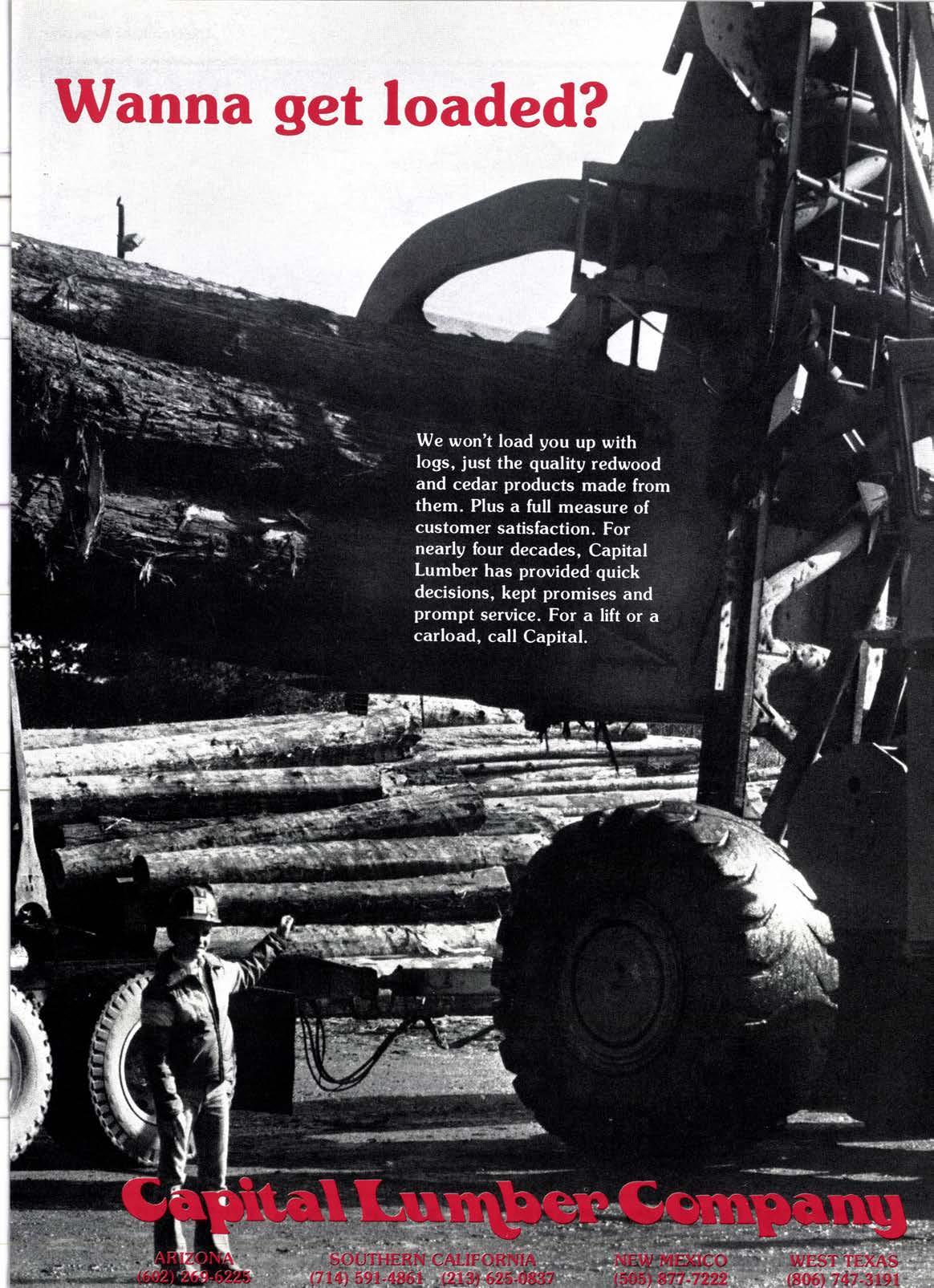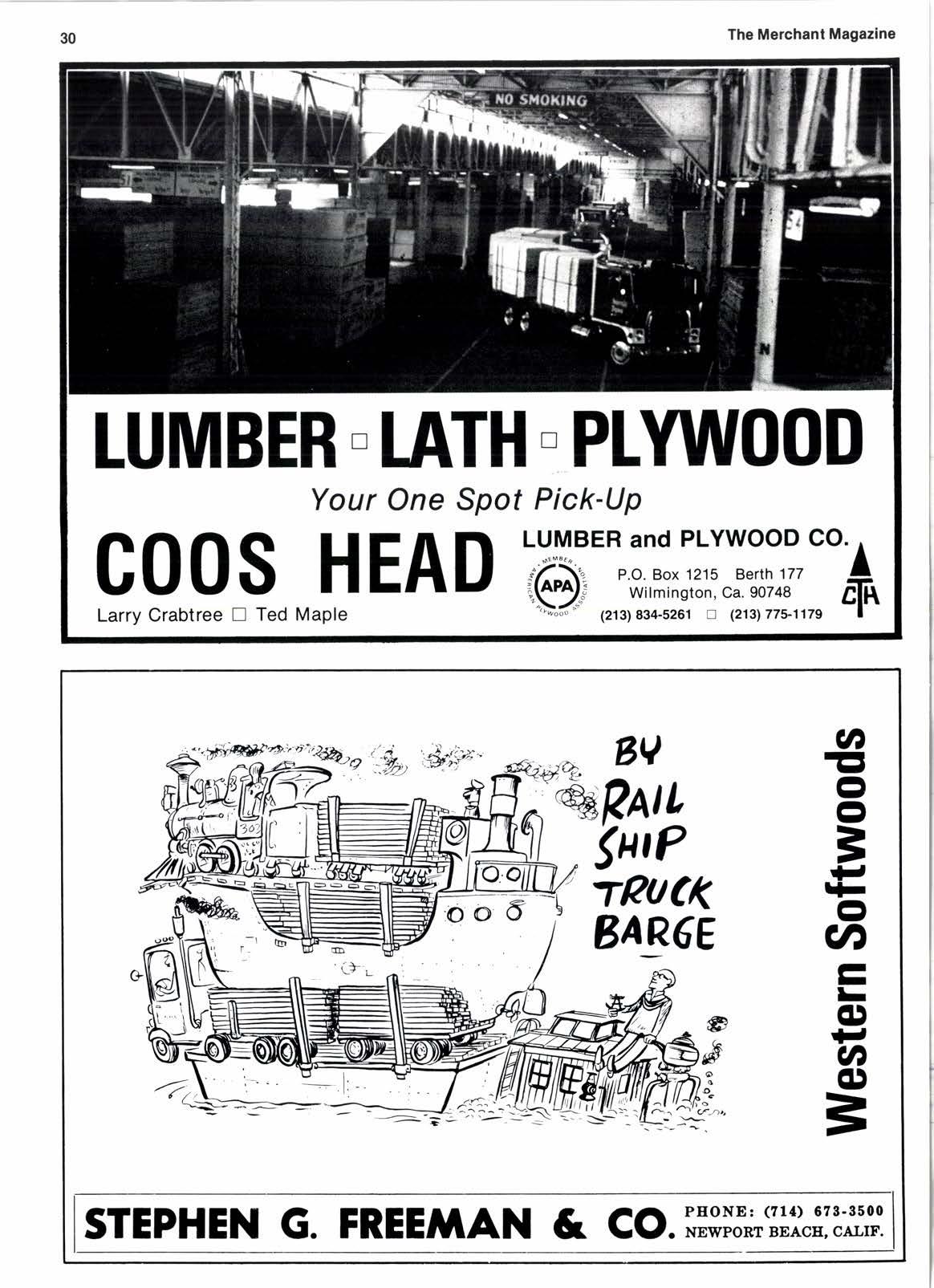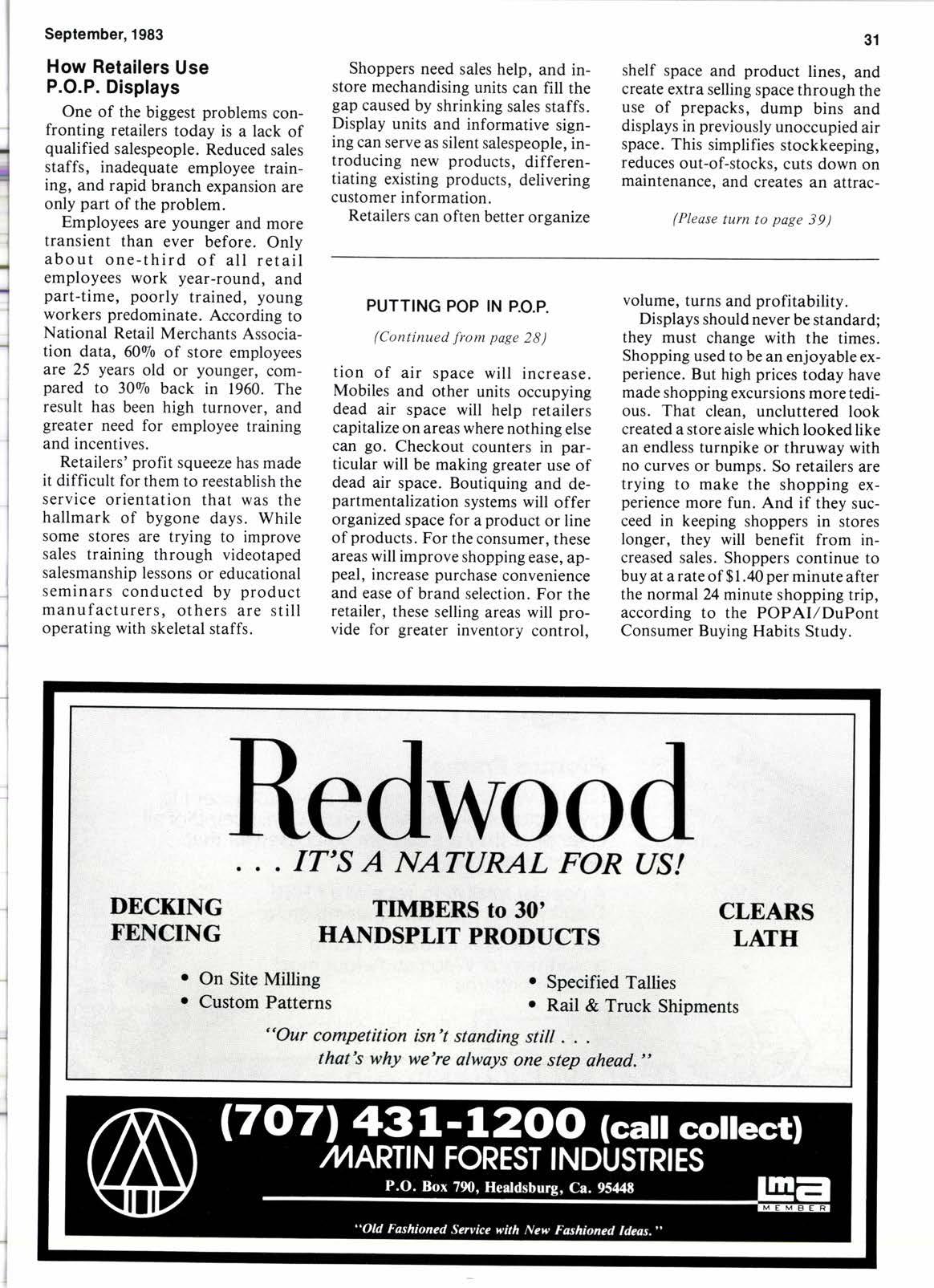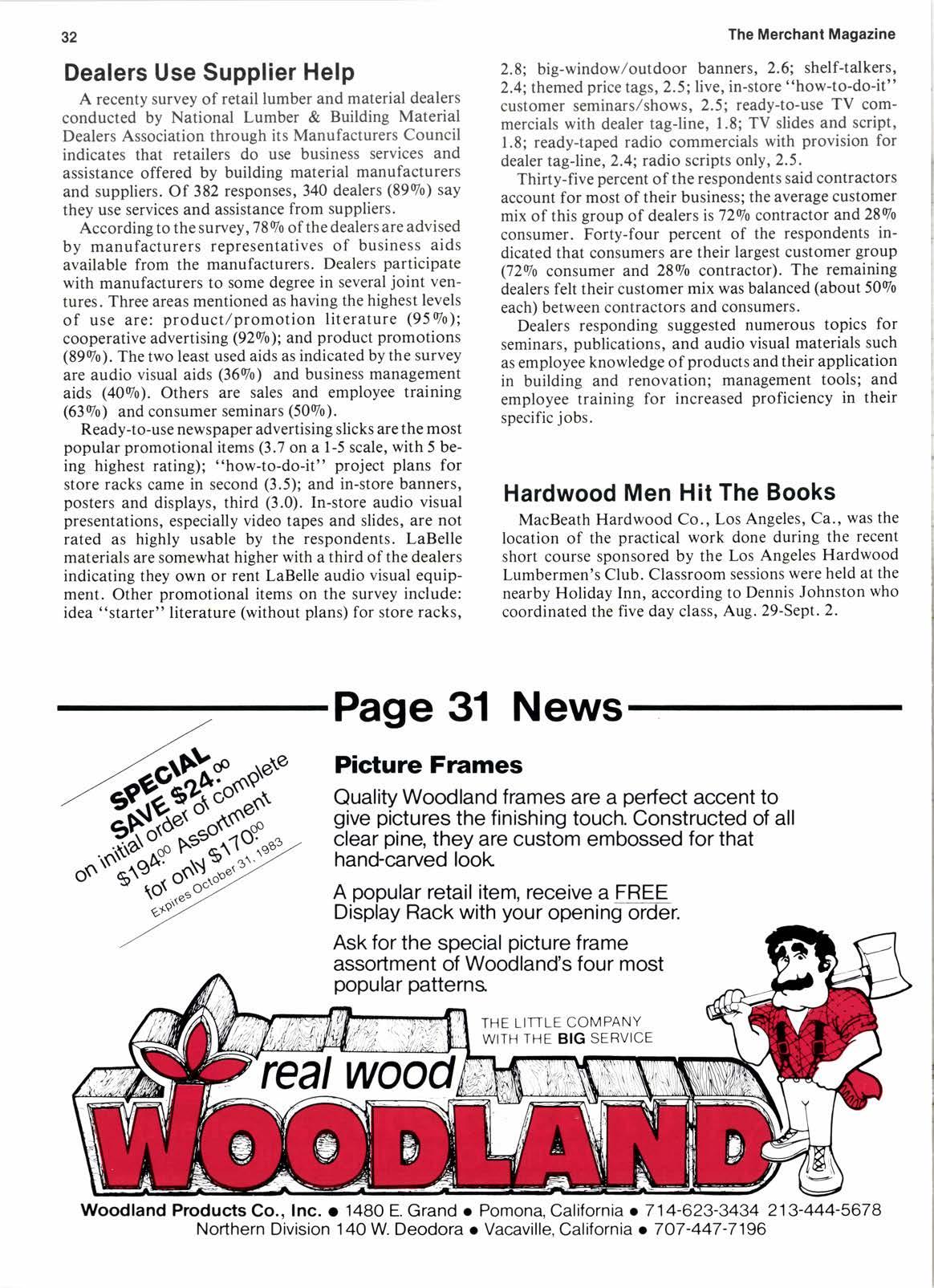
2 minute read
Wanna get loaded?

How Retailers Use P.O.P. Displays
One of the biggest problems confronting retailers today is a lack of qualified salespeople. Reduced sales staffs, inadequate employee training, and rapid branch expansion are only part of the problem.
Employees are younger and more transient than ever before. Only about one-third of all retail employees work year-round, and part-time, poorly trained, young workers predominate. According to National Retail Merchants Association data, 6090 of store employees are 25 years old or younger, compared to 3090 back in 1960. The result has been high turnover, and greater need for employee training and incentives.
Retailers' profit squeeze has made it difficult for them to reestablish the service orientation that was the hallmark of bygone days. While some stores are trying to improve sales training through videotaped salesmanship lessons or educational seminars conducted by product manufacturers, others are still operating with skeletal staffs.

Shoppers need sales help, and instore mechandising units can fill the gap caused by shrinking sales staffs. Display units and informative signing can serve as silent salespeople, introducing new products, differentiating existing products, delivering customer information.
Retailers can often better organize
PUTTING POP IN PO.P.
(Continued from page 28) tion of air space will increase. Mobiles and other units occupying dead air space will help retailers capitalize on areas where nothing else can go. Checkout counters in particular will be making greater use of dead air space. Boutiquing and departmentalization systems will offer organized space for a product or line of products. For the consumer, these areas will improve shopping ease, appeal, increase purchase convenience and ease of brand selection. For the retailer, these selling areas will provide for greater inventory control, shelf space and product lines, and create extra selling space through the use of prepacks, dump bins and displays in previously unoccupied air space. This simplifies stockkeeping, reduces out-of-stocks, cuts down on maintenance, and creates an attrac-
(Please turn to page 39) volume, turns and profitability. Displays should never be standard; they must change with the times. Shopping used to be an enjoyable experience. But high prices today have made shopping excursions more tedious. That clean, uncluttered look created a store aisle which looked like an endless turnpike or thruway with no curves or bumps. So retailers are trying to make the shopping experience more fun. And if they succeed in keeping shoppers in stores longer, they will benefit from increased sales. Shoppers continue to buy at a rate of $ l.4O per minute after the normal 24 minute shopping trip, according to the POPAI/DuPont Consumer Buying Habits Study.
Dealers Use Supplier Help
A recenty survey of retail lumber and material dealers conducted by National Lumber & Building Material Dealers Association through its Manufacturers Council indicates that retailers do use business services and assistance offered by building material manufacturers and suppliers. Of 382 responses, 340 dealers (8990) say they use services and assistance from suppliers'
According to the survey, 78E0 ofthe dealers are advised by manufacturers representatives of business aids available from the manufacturers. Dealers participate with manufacturers to some degree in several joint ventures. Three areas mentioned as having the highest levels of use are: product/promotion literature (9590); cooperative advertising (92s/o); and product promotions (8990). The two least used aids as indicated by the survey are audio visual aids (36s/o) and business management aids (4090). Others are sales and employee training (6390) and consumer seminars (5090).
Ready-to-use newspaper advertising slicks are the most popular promotional items (3.7 on a l-5 scale, with 5 being highest rating); "how-to-do-it" project plans for store racks came in second (3.5); and in-store banners, posters and displays, third (3.0). In-store audio visual presentations, especially video tapes and slides, are not rated as highly usable by the respondents. LaBelle materials are somewhat higher with a third of the dealers indicating they own or rent LaBelle audio visual equipment. Other promotional items on the survey include: idea "starter" literature (without plans) for store racks,











